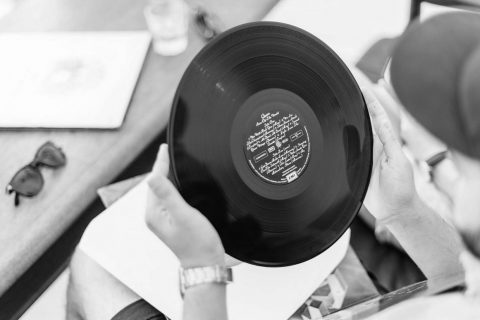When considering the advent of electronic music, it’s easy to argue that electronic music labels were once simpler beasts. Selling hard copy music was much easier, the early internet didn’t offer streaming or charting and any musical revolution would be heavily localised before growing over time. Case in point, Factory Records.
Factory Records was established in Manchester in January, 1978 and run out of one of the founding members’ living rooms. After their early years, which mainly centred around the post-punk legends that were Joy Division, the label started to make a name for itself as one of the great, if not extremely notorious, early electronic labels.
A key part of their marketing strategy was lighting up Manchester’s music scene by throwing outrageous parties. In ‘81, Factory Records opened The Hacienda night club with New Order, Joy Division’s evolution following the death of lead singer Ian Curtis. The club was at capacity almost immediately with Factory Record-centric parties, elevating their label roster and status. This was where New Order would premiere ‘Blue Monday’, possibly one of the biggest electronic hits of all time. Keen to innovate, Factory Records released the single on a floppy-disk shaped record, which turned out to be a massively costly endeavour, with each single only earning the label 5 pence per copy sold. Soon after, The Hacienda was running at a loss, due to low cover charges and even lower bar sales due to an ecstasy influx. It was soon losing tens of thousands of pounds a month and the label, one of the greats, was bankrupt by ‘92.

(Photo: The Hacienda where Factory Records held their label parties)
This is just a small piece of the Factory Records story, but it goes ways to illustrate some of the risks and tips in establishing an electronic music label. A big question to ask when considering the endeavour is – when your music mimics the future, with futuristic sound innovations, should labels keep up with an innovative practise? What can we take from the tale of Factory Records and apply to starting an electronic label in 2018?
First of all, you really have to consider why you’re doing what you’re doing. Factory saw a gap in the market to fill, and despite the fact that in many ways they did this spectacularly badly, the passion for the label’s sound was there, the audience existed and the time was right. Sometimes you might find that you’ve identified a gap in the market and everything may be lining up, but even if there’s no glaringly obvious business reason to establish your label, being inspired by music, a musical community and your idols can be more than enough of a reason to get started.
Nominated for best Australian Indie label of 2012 and having all-encompassing publishing and agency wings, Sweat It Out! Was founded by the late AJAX, one of Australia’s all-time legendary DJs. On their roster you’ll find artists like RUFUS, What So Not, Motez, Yolanda Be Cool, Polographia and more. Matt Handley is the Director of A&R at Sweat, a key part of the label’s innovation and day-to-day management. For him, the catalyst for establishing the label was the wider electronic community’s inspiration from AJAX’ work and music, Sweat being a key part of his legacy. “More than anything it was AJAX getting sent so much new unsigned music by people that looked up to and loved him”, Matt Says. “It felt like the right thing to do.”
When looking at many great independent labels, even harking back to the Factory Records days, you’ll find that their rosters run with a sense of aesthetic consistency, even if they don’t zero in on a specific sub-genre of dance music. Even if you are operating to a more targeted genre theme, the nature of an artist’s evolution means that you’ll need to give your label genre room for flexibility. “Definitely for Sweat It Out we probably would say we don’t really have a sound, or at least, we are non-genre specific,” says Matt. “We’ve always said as long as we love it, whether it’s reggae or rave, for basement or the radio, we will be down to sign it.” Consider a ‘vibe word’ or a common value that characterises your artists and use it as a guide for building your roster. “Overall the one thing we look for in the music we sign, and this is from AJAX, is what he called ‘schtick’, that is, what is it that makes the music interesting and different,” Matt explains. When listening or seeing a potential artist for the label he’ll ask, “What is it’s schtick? And if we can answer that in the positive…we sign it.”

(Photo: The late and great AJAX)
Of course, when you’ve identified your dream roster, you’ll need to make sure that your key artists are keen to collaborate with you, and perhaps most importantly, you’ll need to ensure they have an audience. In this case, you actually want to take a tip from Factory Records and The Hacienda. Throw a goddamn party, just with slightly more strategy. Sweat It Out has indeed established themselves as a great label, they’re also famous for some of Sydney’s best dance parties. The two are mutually beneficial. “It’s definitely a great way of spreading the vibe and getting the name out there, and it’s also a lot of fun,” Matt says. In promoting your party you can also learn to identify your key audience, find out more about them through ticket sales information and also hit the dance floor to meet them, learning about what they’re looking for and what makes them dance. This could also help with acquiring your artists and building your roster. “It showcases the artists on the label and also entices artists to be on the label because they see fun parties happening [in Sweat’s case, all around the world] that they could be a part of.”
So community building should for the most part be a key element of your label strategy but of course, it’s crucial to be digitally savvy and ahead of the curve of innovation as well, lest ye be stuck with the floppy disk records. This can be a huge hurdle for emerging and established labels. “The music industry and the technologies around it are constantly changing, so that’s probably the most challenging hurdle – the fact that the goal posts will forever be moving.”
You might be releasing digitally, on vinyl or even cassette (you do you), but you’ll still need a firm grip on industry trends and what tools your competitors are utilising. Regularly scan electronic music media sites with both small and large followings to see what they’re talking about or if they have new software or platform announcements, identify your competitors and major labels internationally and then go on a ‘like’ spree, paying special attention to how they’re releasing their music and what tools they engage with to promote it. Talk to your audiences, friends and even consider getting an industry mentor, with whom you can pick their brain and also share the information you’re discovering.
It’s easy to be intimidated a saturation of great projects in the label world but don’t be afraid to start small and localise your efforts. And when you’re working away at your couch office, just don’t forget what inspired you in the first place.
Keen to start a record label? We’ll have something for that soon, drop your email below and we’ll contact you in good time!





Comments